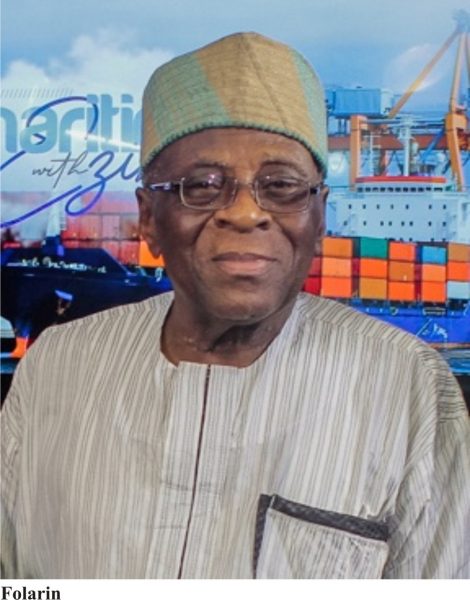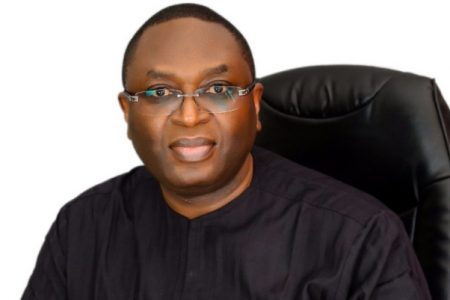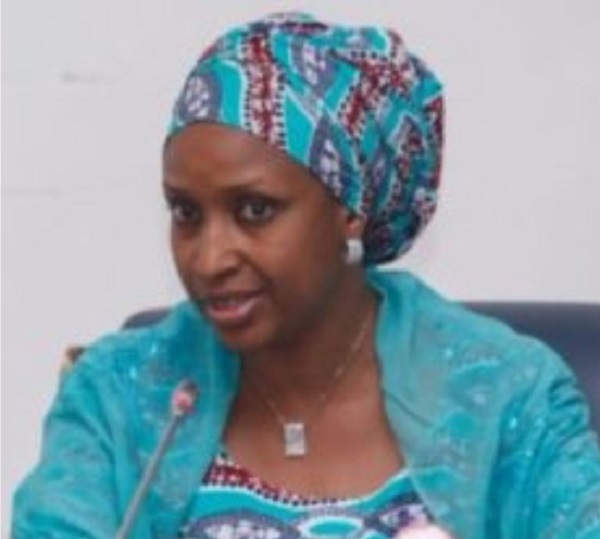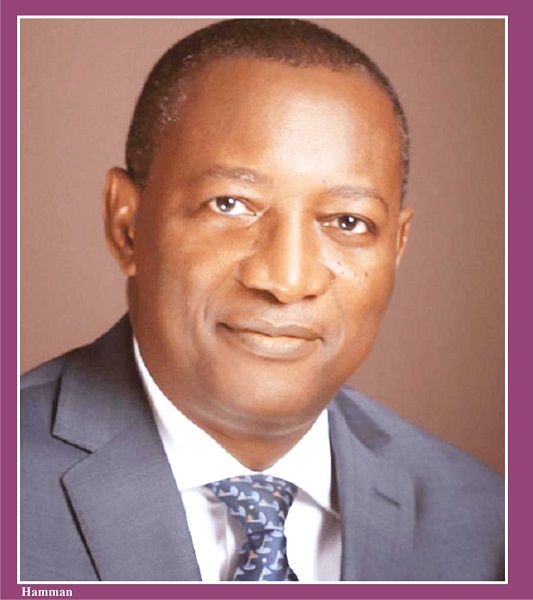Water Transport Has Immense Potentials In Lagos State – Omojoye
 By Kenneth Jukpor
By Kenneth Jukpor
Mr. Felix Omojoye is the Operations Manager for SIFAX Group Ferry Terminal at Ojo.
In this interview with MMS Plus newspaper he shares his perspective on the challenges as well as opportunities for waterways transportation in Lagos State. He also proffers advice to the Lagos State Waterways Authority (LASWA) and the National Inland Waterways Authority (NIWA) on developing water transportation. Excerpts:
SIFAX has been managing this magnificent ferry terminal at Ojo for about eight months. How has the experience been?
We got the concession from Lagos State. So, we have the responsibility of managing the facility for the next few years. Our mandate is to make the place comfortable for passengers and ferry and boat operators moving from Ojo to Apapa. However, we are planning to include passengers going to CMS, Victoria Island and Ikoyi. At the moment the traffic movement here is just from Ojo to Apapa. We run two ferries at the moment buy we intend to increase the number. We also manage other smaller boats that also operate here.
What is the average daily passenger traffic at the Ojo jetty?
We have an average of 900 passengers who pass through the terminal on daily basis. We keep the records with judicious use of manifests. However, we can still do a lot to improve the level of awareness about the ferry terminal because the terminal was created to service areas like Egbeda, Ikotun, Igando, Badagry, Agbara and other environs.
This is a magnificent edifice that SIFAX has built here; but I’m sure there must have been some challenges you have been facing. What are these challenges?
We face several challenges here in the jetty. One of the challenges is the shallow draft we have along the Ojo channel. The draft is too low for the kind of vessels we utilize for the Ojo- Apapa route and this has posed some challenges. However, there are other challenge such as access to fuel needed to operate the boats and the non-availability of safe boats to convey passengers from Ojo to Apapa. Apart from our boats, the other boats are substandard boats with speedboat engines and we can’t guarantee the safety of these boats.
Since this terminal was commissioned there has been an increase in adherence to the use of manifests and life-jackets. How did SIFAX manage to influence this positive change?
We work hand-in-hand with the Lagos State Waterways Authority (LASWA). We have also made efforts to collaborate with other boat operators in order to put things in place for smooth running of the jetty. The observation you made on manifest was something that was painstaking before it was finally adopted by all operators. It is a very important strategy to keep records of the people who go onboard ferries or boats from Ojo to Apapa and vice-versa. If there is any incident, the manifest would help us know those who were involved, their next of kin and other relevant information. Initially, the passengers were unwilling to write their details in the manifest as they saw the process as time-consuming but the policy has come to stay and all boat operators currently abide by it.
LASWA also assisted with regular sensitization programmes to stipulate the quality of life-jackets that should be used. LASWA also provided first aid boxes which was shared to all boat operators recently during a sensitization meeting. They also shared some safety lights which they admonished the boat operators to throw into the water as soon as they have any incident. They lights function as indicators to reveal where the boat is located so that people could easily rescue such victims.
The next step we are set to take is to introduce a rescue team for the Ojo jetty. We have discussed with LASWA and they agreed to bring in a rescue team and a rescue boat to the jetty so that any accident within the region would be addressed in time.
NIWA recently introduced a Waterway Ambulance. Is the Ojo rescue team going to be something of that nature?
Yes, NIWA introduced that after an accident occurred at Liverpool, Apapa. The facility is a welcome development and the Ojo rescue team would be modeled like it so as to save lives and address the urgent medical issues needed for waterways accident victims. With NIWA’s ambulance already in place, an introduction of a rescue boat in Ojo would enable us relax a little from fears of accidents on the waterways and boat mishaps.
On several ocassions, we have also tutored the boat drivers on how to navigate the waterways to avoid accidents and boat capsizing.
There have been ocassions when the Ojo jetty gate had been locked to prevent non-users of the SIFAX ferry to go in and patronize the smaller boats. Some passengers have referred to this as undue SIFAX monopoly. What’s your take on this?
You would agree with me that nobody would love to set up a business and not make profit from it. You should also note that it is extremely difficult to control humans. Most of the passengers passing through this jetty have been difficult. When we introduced the use of manifests at the jetty, it was difficult to implement because people didn’t want to write down their names before they pass through but it was later enforced. The facility is maintained by SIFAX and it costs huge sums to maintain a place like this. At a time we introduced N50 service charge for boat users but they refused to pay as they lamented that the N50 was too much after paying their boat fares.
Apart from that, we have observed that these people tend to risk their lives by patronizing the unsafe boats rather than SIFAX ferries because the small boats are faster. You can’t compare the speed of such boats to a ferry. A ferry is built to convey people on a safe speed so that the passengers arrive their destination safely while the speedboats is like jumping on water and flying. The speedboat is very fast but most of the accidents on the waterways is caused by speed. When these speedboats move too fast, it becomes very difficult to control and accidents occur.
A ferry is balanced, so the waves can’t control it. You hardly see a situation where a bottle water causes a ferry to capsize but that is very common with these little boats. So, these are some of the reasons why the operators of this jetty would prefer that they take the ferries. However, as soon as the ferries are filled, they can take the smaller boats. Some passengers prefer to wait until the ferries are filled because of their love for speed with the smaller boats.
Looking at the gruesome traffic jam in most parts of Lagos State, how would you rate the significance of waterways transpory and what future can you see for the sector in Lagos?
Indeed the waterways can be a viable and significant mode of transportation in Lagos State even if all the roads in the State are fixed. There are certain locations and parts of Lagos that you can easily connect via the waterways that would take long hours on the roads even if there was no traffic. For instance, look at the CMS to Agbara route. It would take more than an hour drive without traffic-jam and two to three hours when there’s gridlock but it takes less than thirty-five minutes via the waterways. When you consider cases when it’s rainy and people want to be safe, ferries also stand as a better option than the roads.
In my opinion, ferry service would get better in Lagos especially with the level of commitment the Lagos State Government is giving the sector. The government is planning to make sure that every route in Lagos that could have a ferry option has it. In developed countries like Dubai, you don’t find banana boats, they have standard ferries to take people from one point to another. Lagos State is already planning to move in this direction. I see more ferry routes coming up in Lagos and more ferries utilized to convey people across the state.
At CMS, you see the likes of SeaCoach, Texas Connections and the rest. At Ikoyi, there is a new ferry terminal built by LASWA and the traffic there has improved with lots of ferries available to move people over there. The story is also the same at Ikorodu where you would be shocked to see the multitude of people waiting to use ferries to different parts of the state. The future of waterways transport in Lagos looks very bright and the state government deserves commendation for this.
What advice do you have for the government especially for agencies like NIWA and LASWA. What can they do better to enable waterways transportation thrive in Lagos and the nation at large?
Recently, the safety team of LASWA visited the Ojo jetty and he was happy that the waterways he is clean. He asked for our wastebaskets and other items which we showed him. The aspect of cleaning the waters is something that has to be done regularly by the government agencies.
With time, I believe things would get better. At the moment, NIWA has some machines on the waterways to remove the refuse, weeds and dirts on the water. I want to commend them for their efforts to keep the waters clean and navigable. LASWA has also done a lot with regards cleaning the water channels.
However, I want to bring the issue of wreck removals to their attention. Sometime ago there was rumour that the government planned to remove all the wrecks so that boats could have navigable access but that never happened. We really need these wrecks removed from our waters while I also want to encourage NIWA and LASWA to extend their efforts to clean the waterways to other aspects of the waters were they don’t cover at the moment.
One last word
Lagos State has taken a good initiative to privatize jetty operations and SIFAX has shown here at Ojo that the business could be managed efficiently and with requisite innovation. The waterway is a safe and viable transportation option for Lagosians. They should take advantage of this mode as an alternative to the traffic chaos usually found on the roads.







